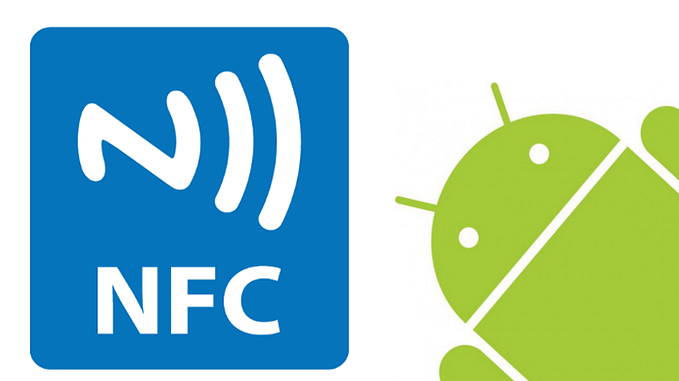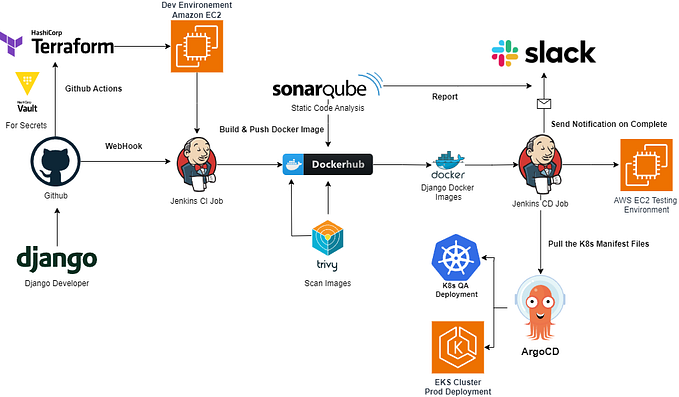Building a DevOps pipeline for your App: Choose a CI/CD server
Generally when we think of CI/CD, we think of a build server. This could be a machine that we have locally or could be a cloud provider that lets us build our apps on some virtual machine somewhere in the world.
In the last year, i’ve been trying to find the best CI/CD service out there for the mobile apps i’ve worked on and for my company. I’ve managed to try a few and looked at a specific criteria when trying to find what works best for mobile apps.
The criteria was as followed:
- Does it support Android and iOS?
- Does it have signIn with Github and Bitbucket support?
- Can I try it out for Android and iOS during the free trial?
- Is it easy to set up?
- What kind of integrations does it have?
- Does it support different workflows?
- How many parallel builds can I do?
The different CI/CD providers I looked into were mostly cloud based as I was not looking to maintain any kind of infrastructure but I had worked with some of these providers below locally too.
Below, I’ll be discussing the above criteria for the following providers : Bitrise, Circle CI, Github Action, TravisCI and SemaphoreCI.
TL;DR

Bitrise
Bitrise is a CI/CD provider that is focused on mobile development. It has support for Android, iOS and other frameworks such as react native and flutter. There is support to sign into your Github and Bitbucket account in order to see all your repositories. I was able to build both Android and iOS projects during the free trial which was 30 days.
It was easy to set up both Android and iOS projects as it has an easy to use web UI that generates a YAML file for you without you having to write any YAML configurations.
Bitrise has many integration steps to choose from that help you integrate things like slack messages on successful builds, uploading your test coverage to SonarQube and a Fastlane step to run your lanes. If there is something they don’t have, you can always run a command line script to try to execute anything custom. This makes it easy to integrate your CI/CD pipeline into other systems.
Bitrise does support multiple workflows which is important for when we would like to trigger different workflows for different branches, pull requests or cron job type builds. These are very useful as you don’t always want to do the same steps for every build when code is pushed.
On Bitrise you can do parallel builds, only two at a time until your trial is over, but parallel nonetheless.
CircleCI
CircleCI is a really good CI and can be used for many diverse projects. This is not only a mobile focused provider and this could be something that you are looking for if your company doesn’t only build mobile apps.
CircleCI does support both Android and iOS and it’s easy enough to set up. There is a .yml file that you need to use to configure how you would like to build your project and it supports Github and Bitbucket signIn so you can have your repositories showing in your CircleCI Dashboard.
CircleCI is free to use on Linux and Windows machines but not if you would like to build on MacOS. MacOS is needed for iOS builds, so when trialing CircleCI, I only tested Android.
The setup with the .yml file was really easy to setup and CircleCI has really good documentation on how to set up your CI for both Android and iOS. There are even sample .yml files you can use to see how it works.
The integrations for CircleCI are based on you running commands in the command line tool. There is no easy way for you to just add an API key into some visual editor and things just work. This is also all done in the .yml configuration file. They have a great sample of how to run your app on Firebase Test lab but looking through that sample, it’s just using the Google Cloud CLI. With that being said this does give you the flexibility to run any kind of actions you need to during your build.
With CircleCI 2.0, they introduced workflows. If you haven’t migrated to CircleCI 2.0, this feature is worth migrating for. These workflows are similar to other providers in that they allow you to run specific jobs for specific workflows and you can trigger these workflows for different branches in your git strategy. This works well when you want to just build feature branches to run unit tests and see code coverage, to run a different workflow for deployment of your app to beta users or to production.
Something I found which I thought was cool was an approval type you can add to jobs that puts builds on hold till there is a human that approves. There is also configuration for schedule builds that could run weekly or nightly at your will which is great.
CircleCI does allow you to do parallel builds but this is only once you are on a paid plan. On the free tier you can only build one job at a time. This should not be a deal breaker as you can get parallel builds once you go on a paid plan.
Github Actions
Github Actions, is one of the new kids on the block and is very similar to CircleCI. Actions is a product that is within your github repository which makes it really easy to get up and running. They have a few templates for specific type projects and they support more than mobile which is something that many companies may want.
Actions does support both Android and iOS, however, it was difficult to determine if I was configuring my project to build the Xcode project on MacOS. This is because the swift template that was provided was just commands for building Swift in the command line. This was a concern as Swift can run on both Linux and MacOS so it was a bit confusing. I did some research on how to set it up manually with my own .yml file configurations. The setup for Android however was really easy to get your first Android build with the template.
In me setting up the project, I did not see anywhere that I could use Bitbucket repositories which would make sense as it’s a Github product.
As I am on the Pro plan on Github I know that you get some Github Action minutes (3000 minutes), and this could be used to build on any platform. In the free tier you get around 2000 minutes of build time. Open source projects are free.
In the land of third party integrations, there are a few steps I saw such as CodeCov and Coverall which upload unit test reports to these platforms. There is a marketplace with over 2000 action steps that you can add to your workflows, I didn’t find many though for mobile specifically. It being a newish provider, means that there will be many more open source contributions to come.
Actions do support multiple workflows and you can configure each workflow by creating different workflow files for different triggers you are expecting.
SemaphoreCI
SemaphoreCI was an interesting find as I had never heard about this provider before going on this journey. At the time they only supported iOS and had Android in Beta but now they support both platforms. I found this provider interesting because of the cool interactive workflow editor they have. It makes it fun to create your workflows, Jobs and steps that your builds need to go through.
SemaphoreCI at this moment only supports signIn with Github so you can easily see all your Github repositories in the dashboard.
When it comes to trying out SemaphoreCI, you can try it out on Android and iOS for free, but they do have a 14 day trial also that allows you to run parallel builds which is not possible on the free tier. They do support open source projects and provide Linux and MacOS virtual machines.
The setup is really easy and I enjoyed the workflow editor as it helped me visualise how my build would run. I could create dependencies for specific jobs based on other jobs that needed to run in order for others to be executed.
From an integration point of view, they do have the ability to enable webhooks for any kind of notifications, there are also slack notifications that can be made use of, but there is not much else unless you are doing some kind of curl call in the command line. If you have Fastlane in your project on both Android and iOS, you can use Fastlane to create lanes that could help with third party integration, this is the method I used.
As mentioned above, SemaphoreCI does support workflows and you can create them to trigger at different points. It also does support parallel builds but not on the free tier though.
TravisCI
TravisCI was the first CI provider I used when I started out building pipelines and it’s always been great. It’s widely used in the open source community, so it was part of my list of CI/CD providers to try out.
Travis has always only had Github signIn but recently has added Bitbucket signIn as a beta feature. This is great because it was a limiting factor if you were using Bitbucket as your source control.
TravisCI is free for open source projects on both Android and iOS which is awesome, I just tested it with open source projects but I do know there is TravisCI Enterprise which you need to contact the sales team about. I did not do that, so not sure what it involves but you can just get in contact with the TravisCI sales team if you would like to do that.
The setup for TravisCI is very simple, as it’s just a .yml file you need to add to your repository and it will pick up the commands from there. There are tags you can add to your .yml file that allows you to send notifications or integrate into a few third party systems like coverall and SonarCloud (but it’s limited). You can use curl calls to external third party integrations which is always good.
When it came to workflows, I didn’t really manage to find any documentation on how to create workflows on TravisCI but there was documentation on conditional builds and I took that as TravisCI’s equivalent of a workflow. You can create cron jobs too for scheduled builds which are great, so it does satisfy this point but your .yml file just becomes really verbose.
On parallel builds, TravisCI supports this, I did not have any issues waiting for other builds to finish before building something else.
Some other honorable mentions of great providers for CI/CD:
- Gitlab : A whole suit of amazing tools including source control and CI/CD that work well together.
- Bamboo: Part of the Atlassian suite of tools and works well with Bitbucket.
- AppCenter: This is a product that Microsoft offers.
- Code Magic: For those that are building flutter apps this is a really cool CI/CD platform as its focused on the Flutter ecosystem.
- Jenkins: This is an open source server software, that you can setup and run on local machines.
Team collaboration & Security
Most of these providers that I have mentioned above also provide team collaboration tools so you can manage roles and privileges for specific builds or workflows. This becomes important when you work in large teams and organisations. You will also need this in order to have audit logs which can show you who has done what on the build server.
I hope this helps whoever is looking to build a pipeline to make the right decision on which service to use. They are all great but hopefully you don’t have to go through testing all of these in order to find the right one like I did.
In the end I did choose Bitrise as it answered all my questions above but this might not be the same for you.
Leave any comments below if you have had different experiences with one of these services or have more information to help people choose.
Stay in touch









